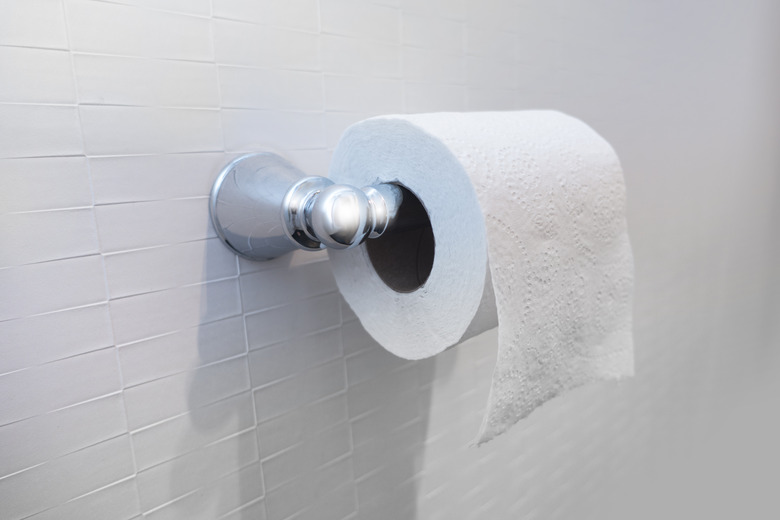How To Install A Ceramic Toilet Paper Holder
We may receive a commission on purchases made from links.
If you like the aesthetic of white glazed ceramic in your bathroom, you aren't limited to large fixtures like your tub, sink and toilet. You can even install a ceramic toilet paper holder to accentuate your décor. While it can be a bit simpler to use traditional screwed-on metal toilet paper holders, the process of installing a ceramic one isn't overly difficult. You will, however, need to properly measure and prepare the thinset used for adhesion.
Important Safety Considerations
Important Safety Considerations
Since this project requires the use of thinset mortar, you should thoroughly read the package instructions before proceeding. If at all possible, turn on the exhaust fan in your bathroom and open any doors and windows to help ventilate while you work with the thinset. It's best to do this project when small children aren't present.
Place a soft folded towel or rug beneath the toilet paper holder while it dries. In the unlikely event the adhesion process fails and it falls off the wall, this will help prevent breakage. If your ceramic toilet paper holder does break, be sure to clean it up thoroughly before walking through the bathroom barefoot or in socks.
Check the back of your toilet paper holder for depth. If the protrusion on the back for mounting is about one-quarter-inch thick or less, it's appropriate to use thinset mortar. If, however, the fixture bumps out significantly in the back, Eclectic-Ware explains that you should use mudset mortar instead. Thinset won't hold the fixture as well, if at all, in that case.
Installing Ceramic Toilet Paper Holders
Installing Ceramic Toilet Paper Holders
When installing a ceramic toilet paper holder, you should sit on your toilet with the lid closed to get a better sense of where you'd like the fixture situated. Reach your arm out as you would when actually using the restroom. Mark on the wall with a pencil where you'd like the center of the toilet paper holder to be.
Then, hold the fixture against the wall using your center mark as a guide to place the center of the toilet paper holder. Trace around the outside of the fixture with a pencil. Next, score the wall with a utility knife. You'll want to insert the knife 1/8 inch to cut the drywall. Remove it and dispose of the pieces. This is the area you'll fill with thinset mortar.
Applying Thinset Mortar
Applying Thinset Mortar
Clean the drywall with a damp sponge or cloth, then dry it thoroughly. Mix the thinset mortar according to the manufacturer instructions. Don't use grout as it will ultimately fail due to an inferior tensile strength and bonding ability. Build Direct explains that this is because grout is formulated with high levels of water and is not intended to hold materials together, but rather to fill gaps.
Apply the thinset mortar into the hole you've created, letting it slightly lip around the opening and cover the entire inner surface of the hole. Then, press the toilet paper holder into the space. Fill the rest of the hole with excess thinset. Clean any thinset that has left the boundary of the hole immediately by wiping it clean with a damp cloth.
Hold the fixture in place firmly while you use strong masking tape to brace the fixture against the wall. The tape will need to hold the toilet paper holder for between four and six hours while the thinset dries thoroughly. After that time has elapsed, you can remove the tape and the fixture should be ready to use.
